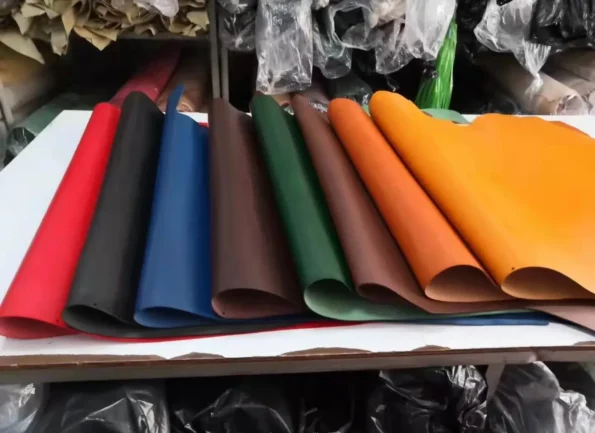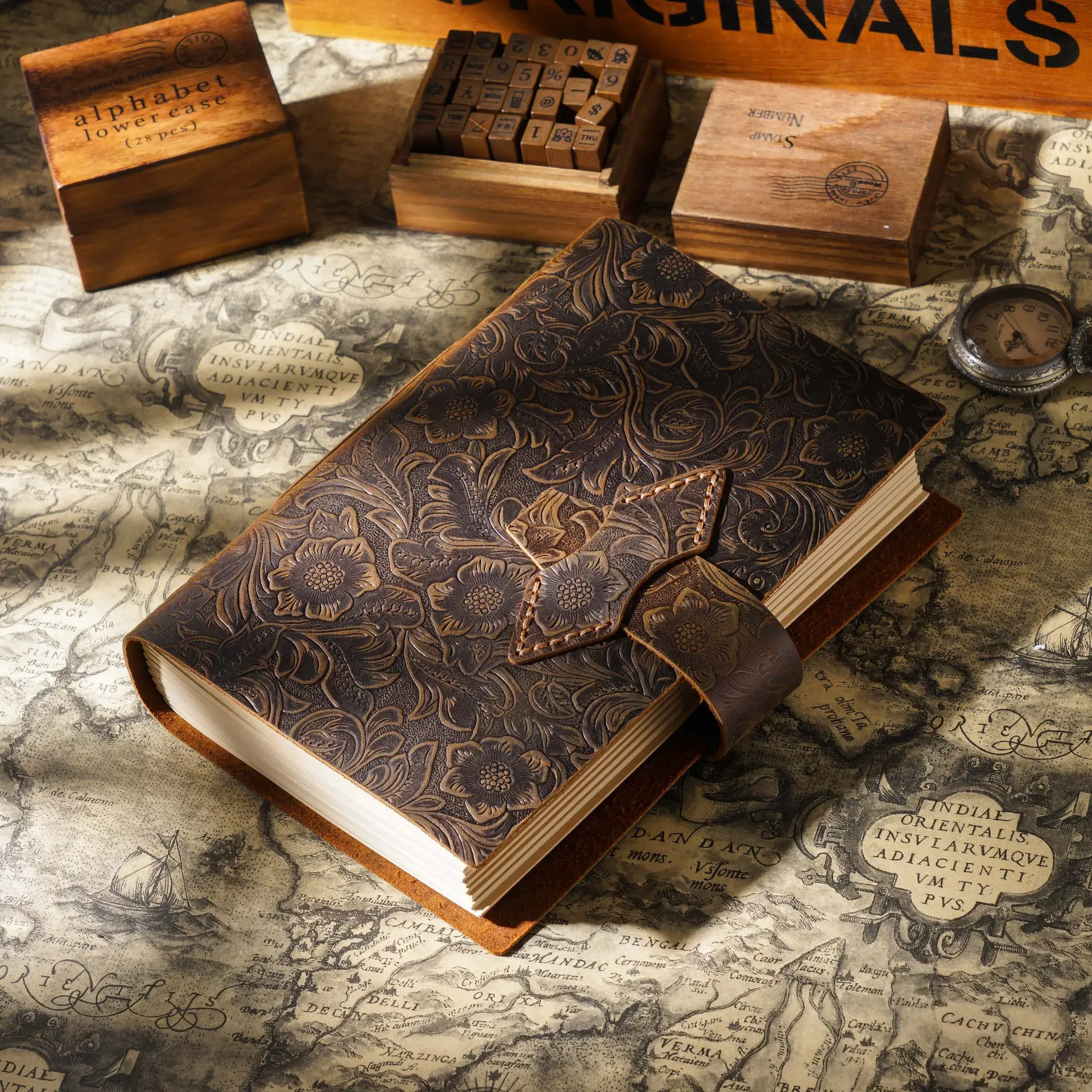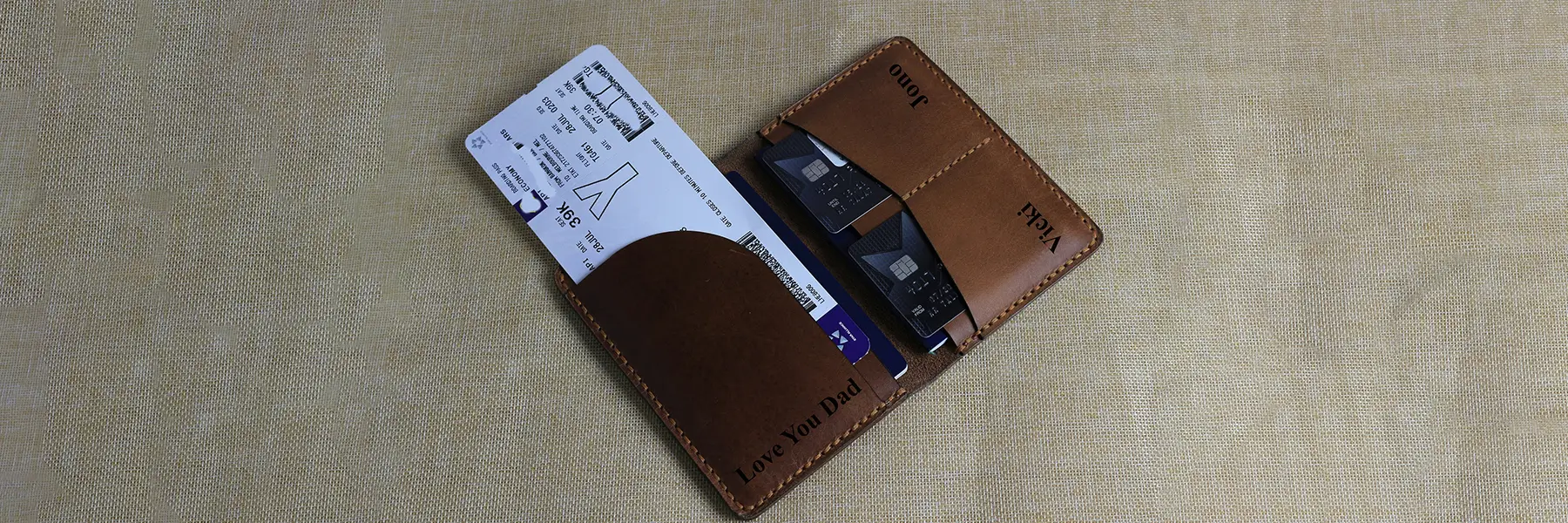Developing a natural and unique surface appearance that distinguishes full-grain leather from cheaper types such as “genuine” and “PU” leather, known as leather patina.
It’s a natural process that occurs as leather ages and is exposed to the air, sunlight, sweat, oil from the user’s skin, and regular handling, as a result, leather becomes soft and develops a beautiful sheen (natural and smooth shine).
Patina is generally considered advantageous as it adds character and authenticity to leather goods and signifies quality and durability. It results in a unique look that leather enthusiasts prize.
In this article, we will take you through the different concepts involved in defining true leather patina.
What Causes the Leather Patina?
Patina development requires time as the primary factor, while other factors, such as the organic nature of leather, its absorbing properties, handling and storing also play an important role. Moreover, artificial processes cannot replicate the beauty and character of a natural patina.
Factors Involved in The Formation of Leather Patina:
The journey of the patina is associated with different things, as described below.
Regular Handling:
Regular use of leather products, such as handling, rubbing, and exposure to body oils, is a significant factor in developing leather patina. It can take anywhere from a few months to years for leather to fully develop its patina, depending on the frequency and intensity of use.
Skin Grease and Dirt Particles:
The natural oils in our skin, which are transferred onto leather through contact, help to nourish and condition the leather fibers, enhancing their ability to develop a patina.
The accumulation of body oils and dirt can also lead to a unique pattern of wear on leather, contributing to the development of a distinctive patina.
Solar UV Radiation:
Limited exposure to sunlight and ultraviolet rays can cause the leather to dry out and fade, contributing to patina development by altering the surface color and texture. UV rays can also cause the leather to harden, resulting in a unique pattern of cracks and creases as the leather ages. Leaving leather products under sunlight or near heat for an extended period of time can damage the product.
Different Types of Leather Patina:
There are multiple ways to develop a leather patina, some of the major ones are explained below.
Petroleum-Derived Patina:
Petroleum-derived patina is a type of leather patina that forms due to the accumulation of natural oils or waxes from leather care products on the surface of the leather. It results in a darker, glossy appearance and can protect the leather from environmental damage. Natural oils like neatsfoot or mink oil can aid in developing an oil-based patina.
Waxed-Coated Patina:
Wax-coated patina is a type of leather patina that forms when a layer of wax is applied to the surface of the leather. The wax helps protect the leather from dryness, stains, and other environmental damage, creating a unique sheen and coloration. The wax layer can gradually wear off, creating a distinctive and personalized patina.
Two types of waxes can be used to create a leather patina: beeswax and carnauba wax. Beeswax creates a natural-looking patina, as it does not penetrate as deeply into the leather as carnauba wax. On the other hand, Carnauba wax creates a more profound patina by allowing more colour to be absorbed into the leather.
Stain-Treated Patina:
Dye-based patina is a type of leather patina that is created by applying a dye solution to the surface of the leather. The dye penetrates into the leather, creating a uniform and long-lasting coloration.
Leather patina can be achieved using either natural or synthetic dyes. Natural dyes such as coffee grounds, tea leaves, or onion skins can create a range of unique patinas. Synthetic dyes, like acid and reactive dyes, are also an option and can produce consistent and vivid coloration on leather surfaces.
Do All Leather Types Form a Patina?
The rate and extent of patina development can vary depending on the type and quality of the leather. The formation of a patina layer on leather is more likely to occur in high-quality full-grain and top-grain leather. The type of leather and its tanning method plays a crucial role in patina development. Leather that undergoes vegetable tanning, which involves natural materials, is more likely to develop a patina over time.
Which Leather Has the Best Patina?
Vegetable-tanned full-grain leather shows the best patina due to its organic tanning process and absorbent properties, which allows the development of a unique and desirable texture and color over time. It is more unresponsive to small damages than other types of leather, which contributes to the durability of its patina.
Does Genuine Leather Get a Patina?
Genuine leather is a lower grade (sometimes fake leather is pretended as genuine leather) and doesn’t develop patina as full-grain and top-grain leather. Genuine leather is made by bonding multiple layers of split leather, which weakens the leather structure and may have different durability and natural aging qualities than high-quality leather.
How To Tell If Your Leather Has a Patina?
Patina is a term used to describe leather’s natural change in color and texture over time due to aging, polishing, and wear. It is characterized by a rich, deep color that cannot be replicated artificially. You can tell if your leather has a patina by observing any changes in its color or texture that have occurred over time due to exposure to light, moisture, and natural oils from the skin. Some of the tips are described below that can help you in identifying that leather has a patina:
Deep and Rich Color:
Leather with a deep, rich, and darker color indicates the presence of a worthwhile and valuable patina. The patina is typically more noticeable on the edges of the leather, and the leather should also display its natural grain. If the leather appears too light or shows signs of artificial dyeing, it may not have a genuine patina. The presence of a patina indicates proper care and maintenance of the leather.
Smooth Texture with Scratches:
High-quality leather with a desirable patina should have a soft texture with some light scratches or imperfections. While the leather may have developed a unique texture and color over time, it should have minimal damage or scratches that detract from its overall appearance. Smoothness indicates that the leather has been adequately cared for and maintained, contributing to its longevity and value.
The Grain Pattern of The Leather:
In leather patina, the grain pattern of the leather is an essential characteristic. A good quality patina should display the natural grain pattern of the leather, which becomes more pronounced with age. This unique pattern results from the animal’s skin and processing, adding to the leather’s uniqueness. Therefore, the natural grain pattern of the leather is a crucial aspect in determining the quality of the patina on the leather.
Aging Look:
Leather patina adds to the originality and aged appearance of leather products such as wallets, belts, bags, watch straps, etc. As leather products age, they form remarkable designs and textures that give them a unique and charming look, which many people find attractive.
Softening of Leather:
Softening of leather is a natural part of the aging process that contributes to patina development. As the leather ages, it becomes softer and more pliable, which adds to its overall comfort and appeal. However, it is essential to ensure that the leather is correctly cared for to maintain its softness and prevent it from becoming brittle or cracking.
Does Patina Mean that the Leather is Worn Out?
Leather improves with age, just like a vine, and a nice patina is a desirable quality many leather accessory owners seek. It does not weaken the leather but enhances its character and unique beauty.
You cannot clean the patina off the leather as it is a natural aging process that gives it a unique appearance. Any attempt to clean it off may harm the leather and remove its character.
Why Do People Want a Leather Patina?
Many people want a leather patina on their accessories like bags, wallets, shoes, watch straps etc. because it gives their leather goods a unique, authentic and aged appearance which is the hallmark of high quality. The patina on leather can be considered good or bad depending on personal preference and the intended use of the leather goods. People may seek patina as a valuable characteristic due to the following reasons.
Pleasing Appearance:
The pleasing appearance of leather accessories is one of the most common reasons for making patina valuable. It adds natural texture and rich color variation to leather goods.
Luxury Leather:
Patina that develops naturally gives leather goods a luxurious look.
Each Patina Tells a Journey:
Each patina that develops on the surface of leather tells us a different and unique journey about the life of leather products. The marks and scratches on the leather surface reflect the leather’s age and use. This patina makes each leather item unique, memorable, precious and tells us its history.
Speeding Up the Leather Patina Process:
Sunlight and heat can speed up the leather patina, but they can damage the product and make it faint; hence this process is not recommended to speed up the process of patina development. Suppose you want to speed up the process of leather patina. In that case, there are many other ways, such as applying oil to the leather, which moisturizes it, softens it, and is also very effective in speeding up the process of leather patina.
Another method is to rub the leather with oily hands, which will produce the natural oils in the leather and speed up the process of the leather patina. When you apply the oil, leave it to dry and absorb for at least an hour.
Slowing down the Leather Patina process:
If you want to slow down the process of leather patina, you must avoid storing and placing leather accessories in damp areas. Try to avoid direct sunlight. Regular cleaning and conditioning can help to maintain the leather’s natural oils and protect it from damage, which can slow down the appearance of the patina over time.
What Is the Best Colour Leather for Patina?
The best color leather for a patina is natural vegetable tan; however, tan and light brown also tend to develop a prominent patina over time.
Can Black Leather Develop Patina?
Black Leather can develop a patina just like other types of leather. Patina on black leather might be less noticeable than different lighter color shades. And no matter what leather accessory type you have, top-grain and full-grain leather are bound to form a patina with age.
How To Care for And Maintain a Beautiful Leather Patina?
You should avoid harsh chemicals and excessive moisture, which can damage the leather. Additionally, storing the leather goods in a cool, dry place away from direct sunlight can help to protect the patina.
Is Patina Associated with Leather Only?
Patina doesn’t develop only on leather, it refers to a natural aging process that occurs on a variety of materials, like copper, bronze, wood, stone and even fabric. In general, patina refers to any kind of change in the surface as a result of age, use, and exposure to the elements.
Conclusion:
In conclusion, this article acknowledges that leather patina is a natural aging process that gives leather accessories a unique and attractive appearance. Regular handling, skin oil, form leather patina. Different types of leather behave differently in developing leather patina. Vegetable-tanned full-grain leather has the best patina properties.
Additionally, it must be remembered that leather patina is a sign of quality, indicating that the leather accessories are natural, high quality, and well crafted. Excessive sunlight and heat are not ideal for the speeding process of leather patina. Instead, they can damage the leather and fade its natural color.
Our Recommended Products for Best Patina Effect.
Personalised Handmade Brown Travel Leather Wallet
Men’s Travel Wallet Brown is a versatile and stylish accessory designed to offer both functionality and sophistication. Crafted from premium full-grain leather, known for its remarkable durability and unique texture, this TASCONY passport holder ensures long-lasting use. click if you like to buy
Full Grain Leather Watch Strap
This Leather Watch Strap is crafted by top artisans from full-grain cowhide leather. This exquisite strap is the ideal complement to vintage watches, and develop a beautiful natural patina over time. click if you like to buy








